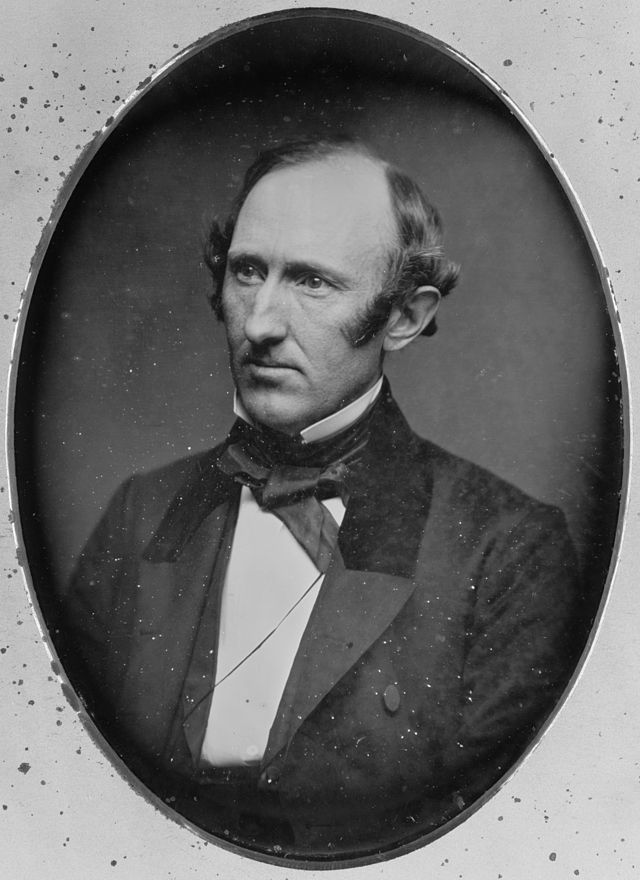
Author Howard R. Floan noted the “tendency, stubbornly persistent even in our own time, to mistake the planter aristocracy for the entire South, to envision the Southerner simply as the slaveholder.” His study of the New England abolitionist aristocracy shows a radical, idealistic clique of utopians divorced from reality who had little, if any understanding of the slavery inherited from the English colonists. Their hands would be stained by the blood of a million Americans who perished in the war they did much to ignite.
Bernhard Thuersam, www.Circa1865.com The Great American Political Divide
Wendell Phillips Hands Drenched in Blood
“In the job of molding public opinion, [William Lloyd] Garrison needed help. The need of a platform personality to carry the cause directly to the people was answered, unsolicited, by Wendell Phillips. At a meeting in 1837, young Phillips rose from the audience, denounced the murderers of Elijah Lovejoy, the antislavery editor, of Alton, Illinois . . . A Bostonian once reported that during a Phillips speech he had heard a man in the audience applauding, stamping his feet, and exclaiming enthusiastically, “The damned old liar! The damned old liar!
Phillips strove to foster a public opinion hostile to slaveholding . . . Phillips battleground was the Northern mind. His eye was on the North, though his shots appeared to be aimed at the South. To arouse Northern awareness of danger, Phillips emphasized the political threat of the South by pointing to its wealth and its continued success in Washington.
For all practical purposes, Phillips said, the slave power was the South; there could be no other South until the North created one. The image of the South which Phillips labored to evoke in the Northern mind embodied deformities that were designed to call up repugnance, anger and fear. It violated the cherished ideals of the North. He conjured up a land of whipping posts and auction blocks, a feudal society in which newspapermen, politicians, and clergymen were vassals. “The South is the thirteenth and fourteenth centuries.”
Phillips . . . often spoke of the possibility of armed rebellion in the South. “I can imagine the scenes of blood through which a rebellious slave-population must march to their rights.”
The agitator must continually intensify his attack if he is to maintain the appearance of vitality. With the years, Phillips grew more vitriolic. In 1853, surveying the achievements of the abolition movement, he said: “To startle the South to madness, so that every step she takes in her blindness, is one more step toward ruin, is much. This we have done.”
Nothing shows more clearly that Phillips had become a victim of his own program. BY this time he could summarize his view of the South in one image: the South was “one great brothel where half a million women are flogged to prostitution, or, worse still, are degraded to believe it honorable.”
By the time of the [John Brown] Harpers Ferry incident, Phillips was able to say that Brown had more right to hang [Virginia] Governor Wise than the Governor had to hang Brown. As Phillips grew more outspoken, some of his listeners became indignant, and the abolitionists were forced to form bodyguards.”
(The South in Northern Eyes, 1831 to 1861, Howard R. Floan, McGraw-Hill, 1958, pp. 11-14)

No comments:
Post a Comment